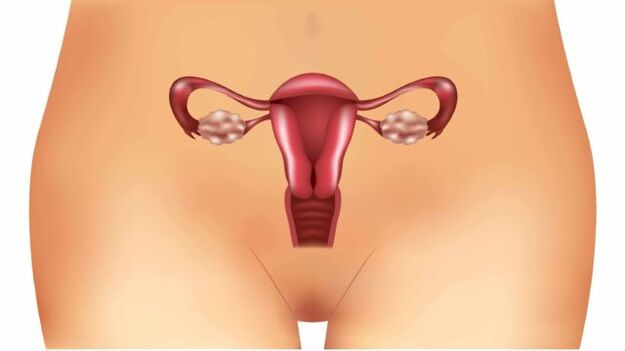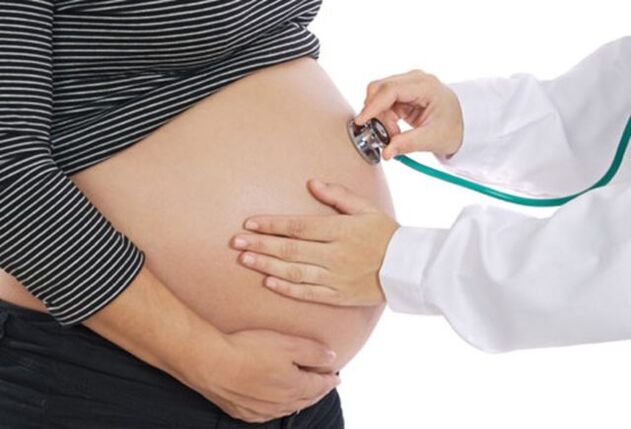Almost everyone has heard of varicose veins. In most people, this vascular disease is associated with leg problems, but quite often the pelvic organs become the site of localization of the pathological process. One of the forms of this pathology is varicose veins of the uterus.
The disease is diagnosed mainly in women or girls of reproductive age, but in some cases it also develops in adolescent girls. To cope with the pathology, it is important to know the main causes and symptoms of its occurrence, as well as to have an idea of the methods of treatment.
Features of the disease
Varicose veins are what disease? This medical term refers to a disease caused by several pathological factors affecting the venous network of the pelvic organs:
- Thin the walls of the blood vessels.
- The formation of vascular nodules.
- Dilation of the venous lumen.
These three factors negatively affect blood circulation in a separate part of the organ and lead to valve failure of the veins in the same area. The disease is difficult to diagnose due to the lack of obvious clinical signs, and also because of the similarity with diseases of the pelvic organs of an inflammatory nature. For these reasons, the disease is often detected at an advanced stage, when treatment is much more complicated.
Gynecologists distinguish two subspecies of the pathological process:
- Uterine varicose veins.
- Cervical varicose veins.
In any case, the disease is dangerous with its complications, among which are inflammatory processes that cover the uterus, ovaries and vagina. The most serious complication is infertility.

Cause of disease
Understanding the underlying factors in the development of the disease provides several key benefits. First, it allows doctors to make faster and more accurate diagnoses, as well as prescribe adequate treatment. Secondly, a woman will be able to try to prevent the development of pathology.
Consider the most likely causes of uterine varicose veins:
- Pregnancy is considered the main factor in the development of the pathological process. Already in the embryonic stage, and then as the fetus grows and develops, the uterine circulation increases (depends heavily on the period). At the same time, in vessels with weakened venous walls, valve function is disturbed and they are stretched. In addition, the growing fetus will increase the load on the pelvic organs, which can also create an impetus for the development of the disease.
- Long-term use of hormonal drugs. Specific drugs adversely affect the condition of the vessels, the vessel walls lose their elasticity.
- Another factor that causes the disease is reduced motor activity. A sedentary or sedentary lifestyle leads to a decrease in the contractile function of the muscles, the consequence of which will be a violation of blood circulation.
- Increase physical activity on the pelvic area. In this case, as well as during pregnancy, blood flow to the pelvic organs, especially to the uterus, increases.
- Increased constipation - in this case, the cause of varicose veins again becomes an increase in blood flow. However, at this time, circulating volume increases again due to increased intra-abdominal pressure.
- Congenital anomalies of the structure of the uterus.
- Termination of artificial pregnancy.
- Childbirth is difficult.
- Inflammatory process in the pelvic organs.
Symptoms and Diagnosis
The complexity of diagnosing varicose veins of the uterus lies in the fact that the symptoms of this disease are masked like other pathologies. In addition, the clinical picture shows rather poor development of the disease:
- Frequent, recurring pain more than 3-4 times a week in the lower abdomen, near the pubic area. The pain syndrome is pronounced, the nature of the pain is tugging and aching. In some cases, the pain is so severe that it makes women unable to work or even get out of bed.
- More than 80% of women with uterine varices experience discomfort or even pain during or after intercourse.
- Violation of the menstrual cycle, delay of menstruation up to 50-60 days is quite possible. In this case, the discharge is usually small, menstruation lasts for more than 5-7 days. Many women do not have a prolonged period which is considered the first sign of menopause.
This clinical picture is inherent in some other gynecological diseases. For this reason, it is impossible to make a diagnosis solely on the basis of symptoms, the doctor is obliged to prescribe some diagnostic measures. Also, in varicose veins of the cervix, the symptoms are the same.
Important: Uterine varices are diagnosed mainly in the second stage, as that is when the described symptoms begin to bother the woman. The earlier the disease is detected and treated, the lower the chance of complications, especially infertility.
For directly assigned studies, they are as follows:
- Ultrasound, done by transvaginal method.
- CT of pelvic organs.
- Dopplerography.
- Selective ovarian imaging.
The necessity of each diagnostic method depends on the data obtained from the ultrasound results, as it is performed first.
Features of the disease during pregnancy
Due to the increased load on the whole body and pelvic organs, during pregnancy, the risk of uterine varicose veins increases. Until a woman gives birth, the disease cannot be treated.

Pathologies that develop during pregnancy affect the choice of birth method. Very often, the doctor decides to have a cesarean section. This is done to avoid complications in the form of thrombophlebitis, internal bleeding, thrombosis, etc. v.
No matter what stage of pregnancy the disease is detected, a woman needs to be constantly monitored by a doctor to monitor the condition of the fetus and the progression of varicose veins.
Important: When planning a pregnancy, have an exam to identify varicose veins and other gynecological problems. This will help avoid complications during childbirth and reduce the risk of diseases during fetal development.
Cure
To receive qualified support for varicose veins, you need to contact your doctor, who will initially be a gynecologist, who will then refer you to a phlebologist.
The basis of treatment is drug therapy, which includes taking the following drugs:
- Venotonics - drugs of this group have a beneficial effect on the state of blood vessels. They tighten the capillaries and blood vessels, reduce permeability, increase elasticity and strengthen the vein walls.
- The drug reduces blood viscosity - contributes to a general improvement of the inflow and outflow of blood in the affected vessels, reduces the likelihood of thrombus formation. Means of this group are contraindicated in pathologies of the cardiac system.
Important: Any medicine should be prescribed only by a doctor, based on the preliminary diagnosis, the patient's medical history, and taking into account the stage of the disease. It is important to observe special care for women in the position.
Treatments
In addition to drug therapy for definitive treatment, an integrated approach and implementation of the following recommendations are important:
- compliance with sleep mode;
- minimize physical activity, but at the same time maintain mobility;
- following a diet that includes plenty of vegetables, fruits and oils rich in vitamin E;
- complementary sports, gymnastics therapy;
- completely get rid of all bad habits;
- Some doctors recommend doing Kegel exercises, which strengthen the vaginal muscles.
Surgical intervention
Such drastic measures are needed in cases where conservative treatment has not yielded adequate results or the disease is detected at a late stage. The following surgical interventions are the most common:
- Vein ablation is the removal of individual sections of small vessels.
- Laser coagulation is the least expensive method of restoring normal blood flow.
- Therapeutic therapy is the introduction into the cavity of the vein an agent that promotes its gluing. The lack of blood supply in the vessel will lead to its spontaneous elimination.
- In the most severe cases, complete removal of the uterus, sometimes including the appendages, is required.
Ethnographic
Alternative methods are one of the options for conservative treatment of complexities. They cannot completely replace drug therapy, but can affect the success of therapy in general.
The most effective means of traditional medicine are:
- Horse chestnut infusion: take 100 grams of chestnut berries, finely chop together with the peel. Pour a small amount of vodka into the resulting raw material so that about 4-5 millimeters of the fruits are crushed. Put in a dark place for 14-15 days. Then, infuse 10 drops twice a day. This tool strengthens the walls of the vessels and thins the blood.
- Lilac tincture: for 0. 5 liters of vodka, you need to take 100 grams of lilac flowers and 30 grams of propolis. All ingredients are poured with vodka and left in a dark place for 30 days (every 2-3 days you need to shake). Then the tincture is filtered and taken 15 ml three times a day before meals.
Remember, before using even the most harmless herbal medicine, you should consult your doctor.
Complications of the disease
Uterine varicose veins are dangerous complications if not adequately treated. These complications are as follows:
- internal bleeding;
- thrombosis;
- inflammatory processes of the genital organs;
- irregular menstruation;
- hormonal disorders of the ovaries;
- dry.
Precautions
It is always better to prevent the development of a disease than to deal with it or its consequences later. To prevent varicose veins, follow these simple guidelines:
- adopt a mobile lifestyle, walk more and walk;
- exercise and sports;
- eat healthy, low-fat, fried, spicy, sour foods;
- Visit your gynecologist regularly, especially when there is the slightest complaint.

Although it is difficult to detect varicose veins of the uterus, in order to prevent the disease from progressing and causing complications, if the symptoms described above appear, consult your doctor. It should also be borne in mind that self-treatment in such cases is contraindicated, requiring careful diagnosis and constant monitoring by a gynecologist and a phlebologist.












































